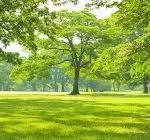Unpaving Denver
The city looks to trees to provide needed shade as heat islands grow and new greenspace proves elusive
By Bruce Finley The Denver Post
Denver leaders who for two decades have backed densification, paving over greenspace with concrete and asphalt to accommodate more people in the city, now are turning to trees for relief from worsening heat islands that amplify climate warming.
But urban ecologists and city officials say trees alone won’t be enough to keep Denver habitable as temperatures increase. They urge a far more ambitious expansion of greenspace.
“And concrete is definitely getting poured faster than we are planting trees,” city forester Mike Swanson told The Denver Post.
Heat islands — dense urban areas that are much warmer than their surroundings — have widened, data show, with Denver emerging as one of the nation’s most “impervious,” or paved-over, cities. Older neighborhoods where houses have yards may be more resilient, researchers have found: Compared with redeveloped parts of the city, these landscapes don’t radiate as much heat.
Tree-planting “is going to be our focal point” for beating the rising heat, Denver Parks and Recreation planning director Gordon Robertson said, acknowledging the heat island problem. Doubled funding of $1 million will bolster tree-planting on public access property and existing parks, concentrated downtown and in “lowequity” neighborhoods, Robertson said.
![]()



Comments
Unpaving Denver — No Comments
HTML tags allowed in your comment: <a href="" title=""> <abbr title=""> <acronym title=""> <b> <blockquote cite=""> <cite> <code> <del datetime=""> <em> <i> <q cite=""> <s> <strike> <strong>